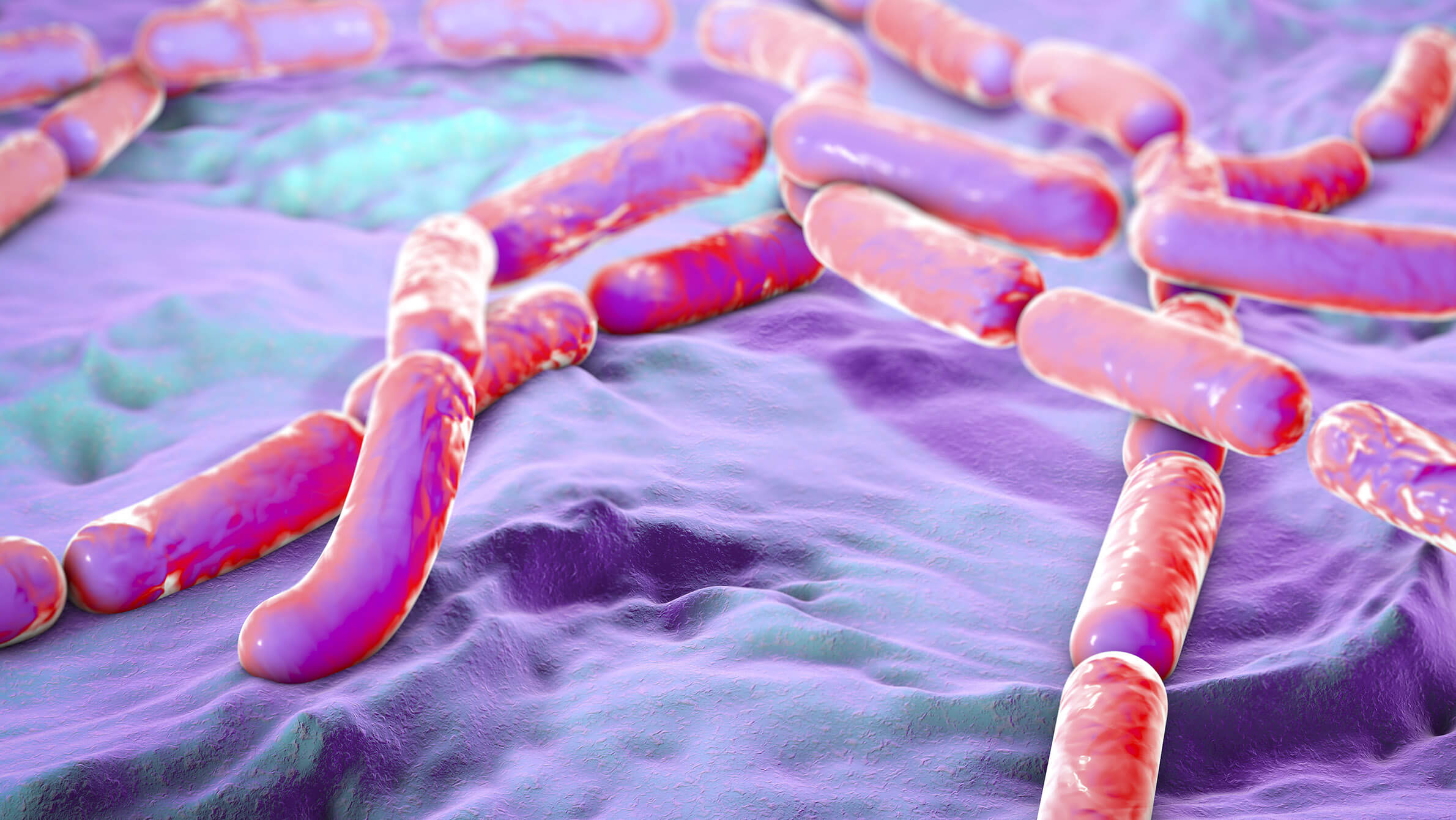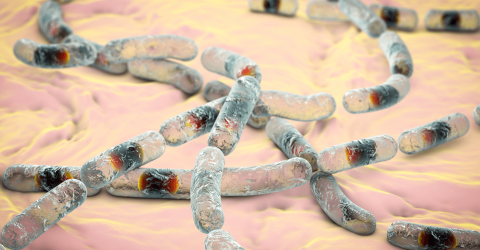일상적인 검사에서 Bacillus cereus group 균주의 구별
7개의 주요 계통발생학적 그룹을 판별하는 것이 미생물 위험을 판별하는 데 연관이 있습니까?
Bacillus cereus군 및 관련된 산업 이슈의 간략한 설명
Bacillus cereus 추정 혹은 B. cereus sensu lato군이라고도 불리는 Bacillus cereus군은 환경과 음식 매트릭스에 널리 분포하는 서로 밀접한 연관이 있는 종들을 포함하고 있습니다. MYP 배지에서 관측되는 특징적인 군집을 제외하면 이 종들은 서로 매우 다른 특징을 지니고 있으며, 이들을 구별하는 것은 여전히 어렵습니다. 현재로서 이들의 분류는 포유류에서의 병원성(B. anthracis, B. cytotoxicus, B. cereus의 구토형/설사형 균주), 곤충에서의 병원성(B. thuringiensis),), 효소의 식품 부패 유발성(B. weihenstephanesis, B. wiedmannii), 열형, 군집 형태(B.(Pseudo)mycoides)와 같은 특징적인 계통발생학적 특성들에 의존하고 있습니다. 최근에는 Bacillus paranthracis와 Bacillus toyonensis가 포함된 15종의 추가적인 종들이 이 군에 속할지도 모르는 종으로 파악되었습니다.
현재로서는 일상적인 검사에서의 B. cereus군의 종들을 분류하는 것은 어렵기 때문에 정확한 종 판별은 자주 시행되지는 않습니다. 다만, 식품 산업의 관점에서 본다면 7개의 주요 계통발생학적 그룹의 연관성은 식품 내 및 식품 생산 체인에서의 미생물학적 위험을 판별하는 데에 관련이 있는 것처럼 보입니다(표 1). 종의 판별보다 해당하는 계통발생학적 그룹과 관련된 위험을 식별하는 것이 위험을 줄이기 위한 더 많은 정보를 주는 것처럼 보입니다.
표 1: B. cereus의 7개의 계통발생학적 그룹과 연관된 특징
| 8 | 8°C에서 생장 2 | 열저항성 1,2,6 | 식중독 2,6 | 종 | ISO16140-2 검증된 방법을 통해 다양성 검사됨 4 |
|---|---|---|---|---|---|
| I | - | / | _ | B. pseudomycoides |
þ |
| II | + | ++ | + | B. cereus, B. albus, B. luti, B. fungorum, B. mobilis, B. nitratireducens B. proteoliticus, B. thuringiensis, B. wiedmannii |
þ |
| III | - | +++ | +++ | B. anthracis, B. cereus, B. pacificus, B. paranthracis, B. thuringiensis, B. tropicus |
þ |
| IV | - | ++ | ++ | B. cereus, B. thuringiensis |
þ |
| V | + 5, 8 | ++ | + | B. cereus, B. thuringiensis, B. toyonensis |
þ |
| VI | + | +/- | - | B. mycoides, B. clarus#, B. paramycoides, B. thuringiensis, B. weihenstephanensis |
þ |
| VII | - | +++ | +++ | B. cytotoxicus |
þ |
DSMZ 또는 NCTC에서 야생 균주가 제공되지 않는 새로 추가된 종은 굵은 글씨로 표시되어 있습니다 * panC 식별된 균주 % 70% 이하, 유의미하기 위해서는 90% 이상이어야 함 유효한 수 아직 출판되지 않았음.
다음 워크플로우에 따라서 미생물 위험을 식별할 수 있습니다:
1단계: ISO7932에 따른 박테리아 계수 이후 MYP 혹은 ISO16140-2 검증을 받은 발색배지를 통한 잠재적인 B. cereus의 식별
2단계: panC 염기서열 분석을 통한 3-5개의 분리종에 대한 계통발생학적 그룹 식별
(Guinebretiere et al. 2010, https://tools.symprevius.org/Bcereus/english.php)
3단계: 얻어진 계통발생학적 그룹에 따른 선택적인 유익한 검사
그룹 III: 구토형(ces+) 및 비구토형(ces-) 균주의 구별
그룹 IV: 일반적인 Bt 균주 간의 구별
이러한 생물들은 공유하는 유전자가 많고 유전자적인 가소성과 독성 특성에 중요한 영향을 주는 서로 차이가 큰 플라스미드 성분을 지닌다는 사실 유념하십시오. 설사형 독소를 암호화하는 유전자는 염색체 내에 존재하기 때문에 모든 균주는 이러한 독소를 생성할 능력을 가지고 있습니다. 따라서, 위험 구별은 ces+, cytk1+로만 제한됩니다(ISO7932:2005/Amd1:2021에서 선택적인 검사법을 확인하십시오).
> 종합적인 기사도 읽어보십시오 BACILLUS CEREUS Group: 식품 업계에서 독소를 생성하는 끈질기고 해로운 미생물
> 완전한 Bacillus cereus Group 분류표 다운로드하기(2021년 9월 시점의 새로운 종 포함)
References
1- Afchain AL, Carlin F, Nguyen-The C, Albert I. Improving quantitative exposure assessment by considering genetic diversity of B. cereus in cooked, pasteurised and chilled foods. Int J Food Microbiol. 2008 Nov 30;128(1):165-73. doi: 10.1016/j.ijfoodmicro.2008.07.028. Epub 2008 Aug 5. PMID: 18805600.
2- Guinebretière MH, Thompson FL, Sorokin A, Normand P, Dawyndt P, Ehling-Schulz M, et al. Ecological diversification in the Bacillus cereus Group. Environ Microbiol. 2008 ;10:851-65. [reference 16 of the Excel complete classification table]
3- Guinebretière MH, Velge P, Couvert O, Carlin F, Debuyser ML, Nguyen-The C. Ability of Bacillus cereus group strains to cause food poisoning varies according to phylogenetic affiliation(groups I to VII) rather than species affiliation. J Clin Microbiol. 2010 Sep;48(9):3388-91. doi: 10.1128/JCM.00921-10. Epub 2010 Jul 21. PMID: 20660215; PMCID: PMC2937725.
4- ISO16140-2 validation report of chromogenic media https://nf-validation.afnor.org/domaine-agroalimentaire/bacillus-cereus/
5- Le Marc Y, Buss da Silva N, Postollec F, Huchet V, Baranyi J, Ellouze M. A stochastic approach for modelling the effects of temperature on the growth rate of Bacillus cereus sensu lato. Int J Food Microbiol. 2021 Jul 2;349:109241. doi: 10.1016/j.ijfoodmicro.2021.109241. Epub 2021 May 11. PMID: 34022612.
6- Luu-Thi H, Khadka DB, Michiels CW. Thermal inactivation parameters of spores from different phylogenetic groups of Bacillus cereus. Int J Food Microbiol. 2014 Oct 17;189:183-8. doi: 10.1016/j.ijfoodmicro.2014.07.027. Epub 2014 Jul 30. PMID: 25171111.
7- Sabrina Cadel Six, Marie-Laure De Buyser, Marie-Léone Vignaud, Trinh Tam Dao, Sabine Messio, Sylvie Pairaud, Jacques-Antoine Hennekinne, Nathalie Pihier, Anne Brisabois, Toxi-infections alimentaires collectives à Bacillus cereus : bilan de la caractérisation des souches de 2006 à 2010, BHE Hors-série 9 mai 2012 | https://www.santepubliquefrance.fr/maladies-et-traumatismes/maladies-infectieuses-d-origine-alimentaire/toxi-infections-alimentaires-collectives/documents/article/toxi-infections-alimentaires-collectives-a-bacillus-cereus-bilan-de-la-caracterisation-des-souches-de-2006-a-2010. [reference 17 of the Excel complete classification table]
8- Webb MD, Barker GC, Goodburn KE, Peck MW. Risk presented to minimally processed chilled foods by psychrotrophic Bacillus cereus. Trends Food Sci Technol. 2019 Nov;93:94-105. doi: 10.1016/j.tifs.2019.08.024. PMID: 31764911; PMCID: PMC6853023.




